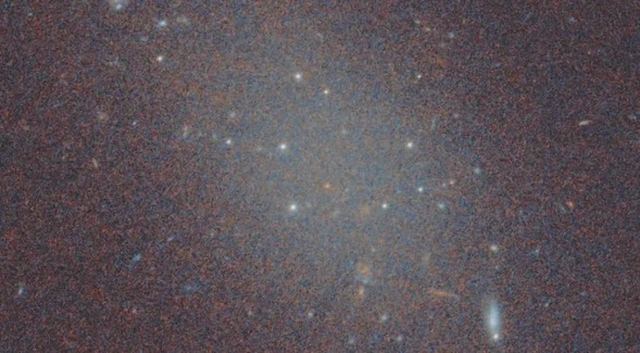26 Apr , 05:55
2

Astronomers made a sensational discovery - a galaxy without dark matter has been found
A group of astronomers has made an amazing discovery - they have found a galaxy that apparently lacks dark matter. This mysterious invisible substance accounts for most of the mass of the Universe and plays a key role in the formation and growth of galaxies. However, the origin of the unusual galaxy called FCC 224 remains unclear, although scientists have several theories.
As reported by TUT.AZ, the study was published in the Astrophysical Journal.
The dwarf galaxy FCC 224, located 65 million light-years from Earth, caught astronomers' attention last year. One of its features is the presence of ten extremely bright dense star clusters - an unusually large number for a galaxy of such modest size. Typically, such an abundance of star clusters is characteristic of large galaxies with large amounts of dark matter.
After studying the movement of stars in the clusters of FCC 224, scientists discovered that they have low velocity. This is a key sign that the galaxy does not have the strong gravitational pull created by dark matter. This behavior of stars puzzles astronomers.
Unlike other known galaxies with a deficit of dark matter, FCC 224 is not isolated and is surrounded by other galaxies. This suggests that such objects may be more common in the Universe than previously thought, and may represent an unknown type of dwarf galaxies.
Scientists have put forward several hypotheses to explain the strange properties of FCC 224. One of them suggests that the galaxy could have formed as a result of a powerful and rapid collision of gas-rich galaxies, during which the gas separated from dark matter and initiated the process of star formation. Another hypothesis links the absence of dark matter to the intensive formation of stars in dense star clusters, creating a high-energy environment that displaced dark matter from the galaxy.
Astronomers also noted the neighboring galaxy FCC 240, which in size, shape, and orientation resembles a twin of FCC 224. If the similarity of the two galaxies is confirmed, this could be evidence that they formed as a result of a galaxy collision according to the scenario described above.
